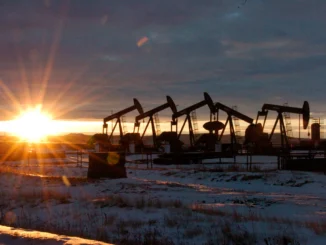
Green skills in the U.S. aren’t growing as fast as green jobs, pressuring companies to get creative to find the workers they need to carry out the energy transition and take advantage of the historic amount of money pouring into climate technology.
Generous incentives in last year’s Inflation Reduction Act have prompted billions of dollars in clean-energy investment announcements that are forecast to create millions of U.S. jobs. But recent data shows strong growth in demand for green skills exacerbating an already tight market where demand outstrips supply.
In 2022, the number of U.S. LinkedIn profiles with at least one green skill grew around 8.4%, compared with a 20% rise in green job postings on the platform, according to data from LinkedIn provided to The Wall Street Journal. The online professional network defines green skills as those that make economic activities more environmentally sustainable, such as carbon accounting, hydrogen engineering and battery manufacturing. It considers green jobs to be ones which include climate action objectives such as removing pollution and preserving natural resources.
Likewise, more than 114,000 U.S. clean-energy jobs were created in 2022, according to last week’s annual employment report from the U.S. Department of Energy. Every state recorded an increase in these jobs and the rise outpaced employment growth in both the wider economy and the overall energy sector. More than 40% of all U.S. energy jobs last year were in clean energy, defined as ones that include technologies aligned with a net-zero future such as electric vehicles, renewables or hydrogen.
“We need this concentration of workers with green skills to be higher,” said Sue Duke, head of global public policy at LinkedIn.
The IRA earmarked around $369 billion of government incentives for energy and climate-related programs over 10 years. The legislation was predicted to create more than nine million clean-energy and climate-related jobs over the next decade, according to the Political Economy Research Institute at the University of Massachusetts Amherst.
The utility-scale clean energy industry has announced more than $150 billion of investment as well as 18,000 new manufacturing jobs associated with new or expanded facilities since the IRA was passed in August 2022, the American Clean Power Association, an industry group for wind, solar and battery storage, said in April.
“The transition to a cleaner economy, as envisioned by many policy makers, will involve building a vast amount of infrastructure,” said Kenneth Gillingham, economics professor at the Yale School of the Environment.
“There has certainly been an uptick in hiring,” Gillingham said. “But much of the building of infrastructure and clean energy is yet to come if the goals of the IRA come to pass.”
The current green skills supply shortage has raised concerns about how U.S. companies will find the workers they need as the IRA-related projects are built and eventually start operating. However, there are some mitigating factors.
“Today’s workforce is not ready for such a scaling up, but the skills needed are not always specific to green technology,” Gillingham said. There are also plenty of traditional economy roles that can quite easily transition to green jobs, such as from construction, electrical work and engineering, he said.
To help close the green skills gap, companies are getting creative. For newer, fast-growing roles such as sustainability manager and energy auditor, some businesses have recruited workers without prior green job experience, according to LinkedIn. It also said around half of the solar consultants and waste managers hired in the U.S. had no prior experience.
Workers at the Nobles wind farm in Reading, Minn. Businesses are not only upskilling current workers but also hiring from areas of the economy that are shrinking. For example, coal-power plant workers are being trained to run renewable-energy farms.
Photo: Tim Gruber for The Wall Street Journal
Businesses are also upskilling current workers and hiring people from areas of the economy that are shrinking. For example, Gillingham said coal-power plant workers are being trained to run renewable-energy farms, operate electric-vehicle charging networks or expand transmission lines.
Universities are also stepping up to help close the green skills gap. For example, the Yale School of the Environment has begun a “major push” into certification programs to train professionals with new green skills that they can quickly bring into their companies, said Sara Smiley Smith, associate dean at the school.
Yale offers two online certification programs, each taking roughly 11 months to complete. One is on financing and deploying clean energy, while the other concerns restoring, conserving and sustainably using tropical forests. It is developing three more certifications and experimenting with the Coursera learning platform.
“The applications to the master’s program I run here have doubled in the last three years,” said Steven Cohen, director of Columbia University’s Master of Science in Sustainability Management. Cohen added: “The growth of programs to educate people to play sustainability roles in private corporations is exploding.”
The need for green skills varies across industries: The green shift in the energy and transport workforces are quite pronounced as they develop lower-carbon energy sources and electric vehicles, respectively.
Construction workers at Plug Power’s green hydrogen plant in Woodbine, Georgia. More than 84% of net new electric power generation jobs last year were in clean energy.
Photo: Todd Anderson for The Wall Street Journal
More than 84% of net new electric power generation jobs last year were in clean energy such as renewables, geothermal and nuclear, although oil and gas jobs grew too, with only coal jobs falling, according to the U.S. Department of Energy. However, LinkedIn data shows that even within the U.S. oil-and-gas industry there has been a steady increase in the share of its workforce acquiring green skills, which has risen to 22%, well above the average across U.S. industries, at around 12%.
Likewise, there were more than 200,000 jobs added last year in the clean energy vehicle sector, reflecting year-over-year growth of more than 20%, according to the U.S. Department of Energy. As of 2023, nearly 11% of U.S. transport workers, such as employees of carmakers, have green skills, according to LinkedIn. The U.S.’s share of auto workers with electric vehicle-related skills rose by 68% between 2018 and 2023.
In contrast, the U.S. finance industry is lagging behind the national average despite many businesses talking up how they are increasingly basing their investments on environmental, social and governance criteria. The proportion of U.S. financial workers with green skills reached 8% in 2023, but is growing faster than most industries with a 14.8% year-over-year increase.
—Rochelle Toplensky contributed to this article.
Write to Dieter Holger at dieter.holger@wsj.com
ENB Top News
ENB
Energy Dashboard
ENB Podcast
ENB Substack



